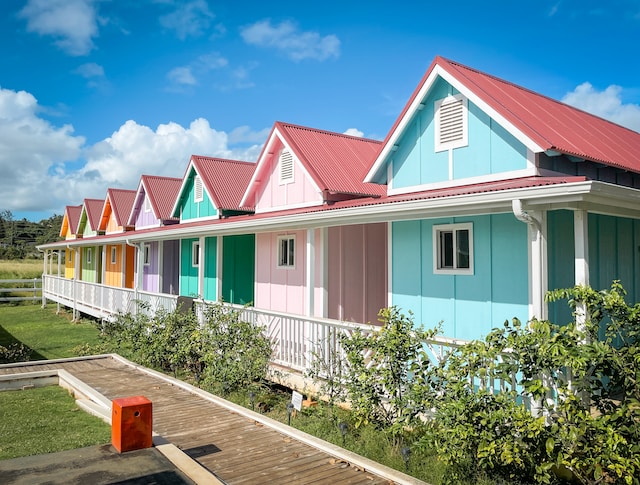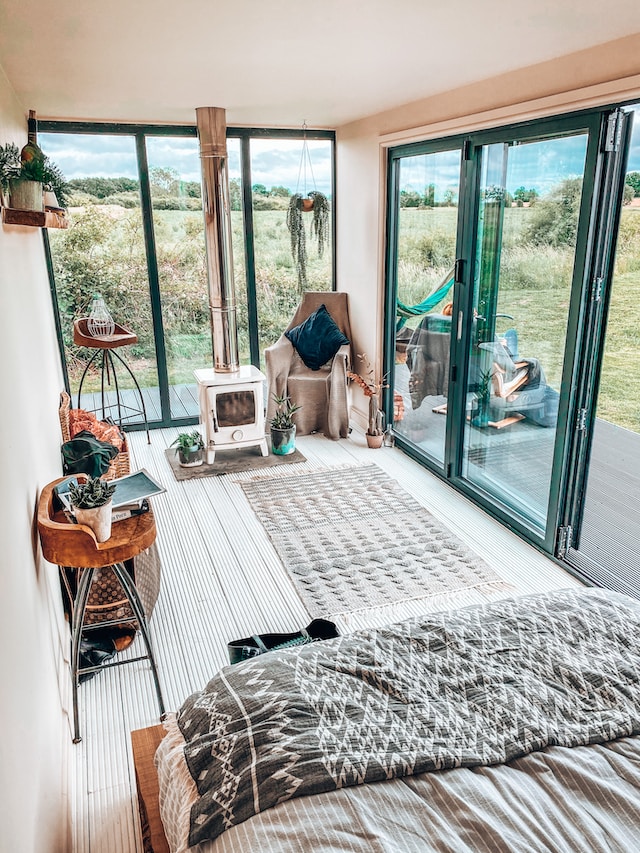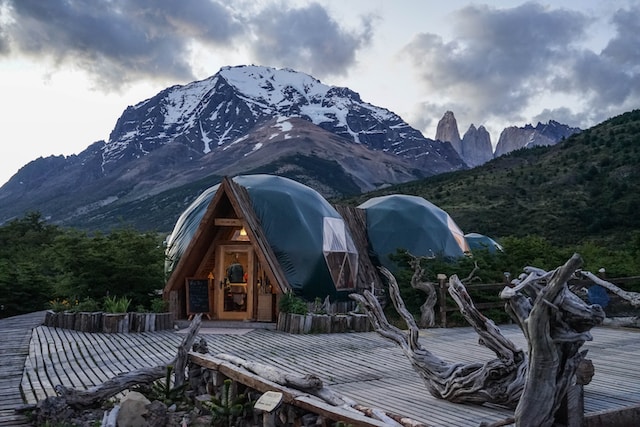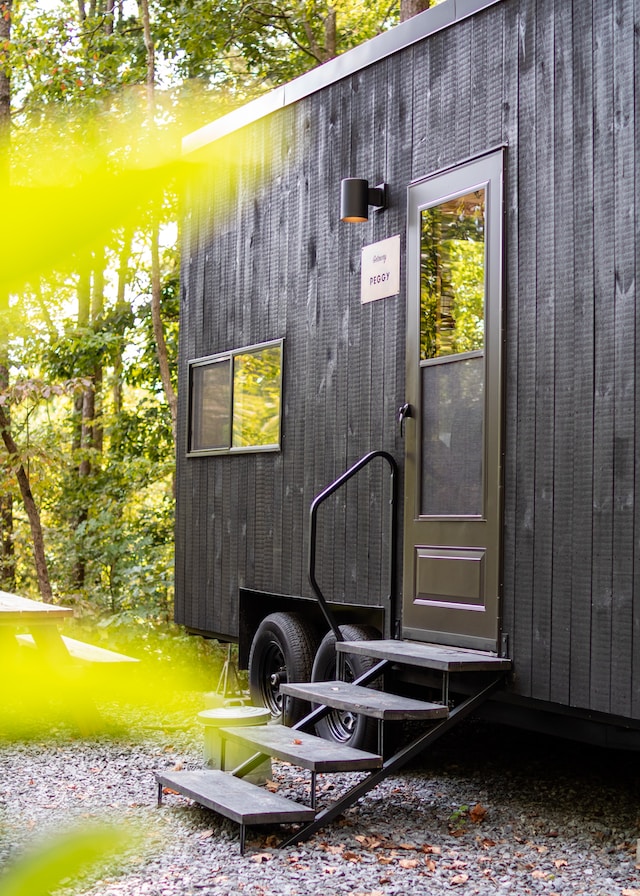
As the world’s population grows and cities become more crowded, the concept of tiny living communities is gaining popularity. These communities are made up of small homes, typically less than 400 square feet, and are designed to promote a more sustainable and minimalist way of life.
For some, the idea of living in such a small space may seem daunting, but proponents of tiny living argue that it allows for a simpler and more intentional lifestyle. With less space, there is less room for clutter and excess, and residents must be creative in finding efficient storage solutions. Many tiny homes also come equipped with eco-friendly features like composting toilets and rainwater collection systems, making them more environmentally sustainable.
In addition to the practical benefits of tiny living, there is also a sense of community that comes with living in such close proximity to others. Tiny living communities often have shared spaces such as gardens and common rooms, where residents can come together to socialize and collaborate on projects. This sense of connection and support is a stark contrast to the isolation and disconnection that can often come with living in a large, impersonal apartment complex.
But tiny living isn’t just about practicality and community, it’s also about embracing a philosophy of minimalism and intentional living. By choosing to live in a tiny home, residents are making a conscious decision to prioritize experiences and relationships over material possessions. They are saying “no” to the consumerist culture that has long dominated modern society, and “yes” to a more simple and meaningful way of life.
Of course, tiny living is not without its challenges. Living in a small space can be difficult, especially for those with children or pets. And finding suitable land to park your tiny home can be a challenge in itself, as many communities have restrictions on tiny homes.
But for those willing to take on these challenges, the benefits of tiny living are numerous. From the financial savings to the environmental benefits, to the sense of community and intentional living, tiny living communities offer a unique and compelling alternative to traditional housing options.
Benefits of Tiny Living Communities
Embracing a tiny living lifestyle can offer a multitude of benefits to individuals and families seeking a simpler, more intentional way of life. From financial savings to environmental sustainability and a strong sense of community, the advantages of living in a tiny home are both practical and transformative.
Financial Savings:
Reduced living costs: Tiny homes have a much smaller footprint, which means lower upfront costs, lower utility bills, and decreased maintenance expenses.
Affordable homeownership: The affordability of tiny homes allows individuals and families to enter the housing market who may have otherwise been priced out.

Environmental Benefits:
Reduced carbon footprint: Smaller living spaces require less energy to heat and cool, resulting in reduced greenhouse gas emissions.
Conservation of resources: Tiny homes promote minimalism, encouraging residents to consume less and waste less, contributing to a more sustainable lifestyle.
Efficient use of land: Tiny living communities maximize the use of land by fitting more homes into a smaller space, minimizing urban sprawl and preserving natural habitats.
Sense of Community:
Social connections: Living in close proximity to others fosters a strong sense of community and encourages social interaction, creating a support network.
Collaborative projects: Shared spaces within the community, such as gardens and common rooms, provide opportunities for residents to collaborate on projects, fostering a collaborative and creative environment.
Intentional Living:
Minimalism: Tiny living communities inspire residents to downsize their possessions, prioritizing experiences and meaningful relationships over material wealth.
Emotional well-being: Living a simpler and clutter-free life can lead to reduced stress levels and increased mental well-being.
Flexibility and mobility: Tiny homes are often portable, allowing residents the freedom to travel or relocate without the burden of traditional homeownership.
Challenges and Considerations
Living in a tiny home or in a tiny living community does come with its challenges and considerations. Some of these include:
Limited Space: The most obvious challenge of tiny living is the limited space available. It requires careful organization and creative storage solutions to make the most of every square inch.
Privacy Concerns: Living in close proximity to others can sometimes result in a lack of privacy. Noise and disturbances from neighboring homes can be challenging, especially for those who require solitude or quiet working environments.
Family Considerations: Families with children may find it difficult to adapt to the limited space of a tiny home. Finding suitable sleeping arrangements and space for play and study can be a challenge.
Pet Accommodations: Pets also need space to play and move around, which can be restricted in tiny homes. Finding appropriate areas for pets to exercise and fulfill their natural instincts can be a challenge.
Zoning and Legal Restrictions: Many areas have zoning regulations and legal restrictions that make it difficult to find suitable land for parking a tiny home. It requires thorough research and potentially navigating legal obstacles.
Limited Resale Value: Tiny homes may not hold their value as traditional homes do. This can pose challenges if residents decide to sell or relocate in the future.
Maintenance and Repairs: With smaller spaces, maintenance and repair tasks can be more challenging, particularly if access to certain areas is limited. Issues with plumbing, electrical systems, or structural elements may require professional assistance.
Limited Amenities: Tiny living communities may not have the same amenities as larger housing developments, such as swimming pools, gyms, or playgrounds. Residents may need to find alternative solutions or rely on public facilities.

Building Codes and Regulations: Building codes and regulations for tiny homes can vary greatly between different jurisdictions. Ensuring compliance with local building standards can be a hurdle for those considering tiny living.
Adaptation and Transition: Adjusting to a significantly smaller living space can take time and require a shift in mindset and lifestyle. It may take some time to adapt to the minimalistic approach and learn to live with fewer material possessions.
Despite these challenges, the benefits of tiny living communities often outweigh the obstacles for those seeking a simpler, more intentional way of life. With careful planning and consideration, individuals and families can find fulfillment and contentment in these unique communities.
Features and Amenities in Tiny Living Communities
Living in tiny homes doesn’t mean sacrificing comfort and convenience. Tiny living communities often come equipped with various features and amenities to enhance the quality of life for residents. Here are some common features and amenities you can expect to find in these communities:
Common Areas:
Shared Gardens: Many tiny living communities have communal gardens where residents can grow their own fruits, vegetables, and flowers. These shared spaces encourage collaboration and foster a sense of community.
Common Rooms: Community buildings or common rooms provide areas for residents to gather, socialize, and engage in group activities. These spaces can be used for events, workshops, or simply as a place to relax and connect with neighbors.
Laundry Facilities: Shared laundry facilities are often available within the community, eliminating the need for residents to have their own washer and dryer in their tiny homes.
Sustainable Features:
Renewable Energy Sources: Some tiny living communities incorporate renewable energy sources like solar panels or wind turbines to power the homes. This reduces reliance on traditional power grids and promotes eco-friendliness.
Rainwater Collection Systems: To conserve water resources, tiny homes may have rainwater collection systems for non-potable water uses, such as irrigation or toilet flushing.
Composting and Recycling Facilities: Communities may have designated areas for composting organic waste and recycling materials, promoting a waste-free and environmentally conscious lifestyle.
Community Services:
Workspaces and Co-working Areas: Many tiny living communities feature shared workspaces or co-working areas, providing a designated space for residents to work remotely or pursue their creative endeavors.
Guest Accommodations: Some communities may offer guest accommodations for visitors, allowing residents to host family and friends without compromising their limited living space.
Shared Transportation: Tiny living communities often encourage sustainable transportation methods by providing shared bicycles, electric scooters, or even community vehicles for residents to use.

Supportive Services:
Community Events and Workshops: Tiny living communities frequently organize community events, workshops, and classes that promote learning, skill-sharing, and personal growth. These events foster connections and create a supportive environment within the community.
Community Gardens: In addition to shared gardens, some communities have community gardens managed by residents. These spaces offer opportunities for residents to engage in communal gardening projects and grow food collectively.
Wellness Facilities: Communities may include wellness facilities such as yoga studios, meditation spaces, or fitness areas to support residents’ physical and mental well-being.
Maintenance and Support:
On-Site Maintenance: Many tiny living communities provide on-site maintenance services to address any repairs or issues that may arise in the homes or community facilities. This simplifies the maintenance process for residents.
Community Support Networks: Living in close proximity fosters a tight-knit community where residents can rely on each other for assistance, advice, and support. These networks can be invaluable in times of need or emergencies.
It’s important to note that the features and amenities offered in tiny living communities can vary depending on the specific community and its location. When researching or considering a particular community, it’s recommended to inquire about the features and amenities they provide to ensure they align with your preferences and needs.
How to Get Started in a Tiny Living Community
Research and Explore
Begin by researching different tiny living communities in your desired location. Look for communities that align with your values and offer the amenities and features that you desire. Take the time to explore their websites, social media pages, and read reviews or testimonials from current or previous residents. This will give you an idea of what to expect and help you narrow down your options.
Visit and Tour
Once you have identified a few communities that pique your interest, schedule visits and tours. This will give you an opportunity to see the homes, common areas, and meet some of the residents. Take note of the overall atmosphere and sense of community. Ask any questions you may have regarding the community guidelines, financial commitments, and requirements for living in the community.
Consider Financials
Determine your budget and the financial commitments associated with living in a tiny home community. This may include the cost of purchasing or renting a tiny home, monthly or yearly community fees, and any additional expenses such as utilities or maintenance. Make sure to have a clear understanding of these costs and how they fit into your overall financial plan.

Downsizing and Simplifying
Before moving into a tiny home, it’s essential to downsize and simplify your belongings. Take inventory of your possessions and consider what you truly need and cherish. Embrace a minimalistic mindset and let go of items that no longer serve a purpose in your life. Donate, sell, or recycle items that can be repurposed by others.
Choose the Right Tiny Home
Select a tiny home that suits your needs and preferences. There are various styles and designs available, from pre-built models to custom-built options. Consider factors such as size, layout, storage options, and eco-friendly features. Work with reputable builders or suppliers who specialize in tiny homes and ensure the home meets all necessary building codes and regulations.
Prepare for Community Living
Living in a tiny home community requires a willingness to collaborate, participate, and respect community guidelines. Familiarize yourself with the rules and regulations of the community and ensure they align with your lifestyle and values. Be prepared to actively engage in community activities, contribute to shared spaces, and foster connections with your neighbors.
Secure Land or Space
Find suitable land or space to park your tiny home. This can involve purchasing or renting land in a tiny home community, leasing a spot in an existing community, or exploring alternative arrangements such as backyard parking or co-operative land initiatives. Ensure that the land or space meets the necessary zoning and legal requirements for tiny home living.
Transition and Adapt
Moving into a tiny home and adjusting to a minimalist lifestyle can be a significant transition. Be prepared for the challenges and adjustments that come with living in a smaller space. Embrace the opportunity to simplify your life and prioritize experiences over material possessions. Be open to the potential personal growth and fulfillment that can come from living in a tiny living community.
Remember that each tiny living community is unique, and the process of getting started may differ slightly. Be sure to reach out to the specific community you are interested in for their guidelines and requirements. With careful planning, consideration, and a willingness to embrace a simpler way of life, you can embark on a transformative journey in a tiny living community.
